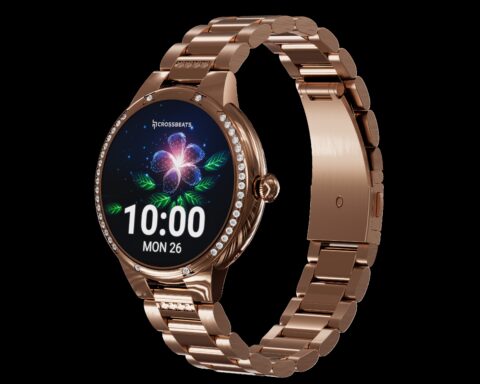
Inspiration can be complicated and demanding, and fashion designers know this well. “How can I create a mid-length, backless floral gown with an avant garde silhouette and Bollywood bling?” A Google search will throw up hundreds of pages of general results, hiding relevant information under reams of text. Or, using artificial intelligence (AI) you could get precise, tailor-made inputs culled from years and years of fashion data. For example, how to create a red skirt that will appeal to millennials?
An AI machine will crunch fashion data related to millennials, current colour and silhouette trends, trend forecasts for the next season, what Bollywood stars are wearing and such similar information, and suggest, say, 10 options to choose from. While a fashion intern may take a couple of days or a week to come up with suggestions, machines do this in a matter of seconds.
India is slowly waking up to AI-enabled fashion. On May 28, designer duo Falguni & Shane Peacock unveiled a collection in collaboration with IBM-Watson -an AI platform that can analyse data including unstructured text, images, audio and video. Watson dictated the base print, colours and silhouettes for the three-piece collection that Peacock finished in about a week.His only input was to add a sheath of crystals on top to lend his personal signature to the garments.
At present, AI finds two main applications in India’s fashionscape: One, for creating clothes and two, for helping fashion retailers predict current and future trends to create clothes that are in high demand and to enable highly personalised shopping experience for customers.
The first category is still very limited. Falguni & Shane are the only designers to have dabbled in it so far, and online fashion retail platform Myntra launched a line of machine designed T-shirts, called Moda Rapido, in 2015, developed by its in-house AI platform, RAPID.
“Moda Rapido has now become a profitable Rs 50 crore brand for us,” says Ambarish Kenghe, chief product officer, Myntra. Kenghe explains that AI hits the base problem of fashion -how to take bets on what will sell six months down the line and how to optimise supply chain. “Our machines look at what features are selling the most here. Chinese collars, stripes, university prints? With these and additional inputs they come up with designs.” Myntra put these machine-made T-shirts for sale along with other tees; surprisingly , the AI-designed products sold better because machines were able to crunch much more data than humans.
Globally, AI has been influencing fashion choices and appearances for the past few years. It made a news splash in 2016 when model Karolina Kurkova wore a cognitive dress -co-designed by IBM-Watson and French label Marchesa -to the Met Gala. The dress, embellished with fabric flowers embedded with LED bulbs, lit up in different colours. Watson converted the mood of live updates on Marchesa’s social media accounts into a colour palate for the LEDs. For example, the bulbs lit up in aqua when tweets were full of excitement and switched to lavender when people tweeted curious comments.
While such nuanced cognitive couture is still awaited in India, fashion vendors are using machine intelligence to scale up their business. The Label Life, an online platform selling curated fashion by celebrities like Malaika Arora, Bipasha Basu and Sussanne Khan uses an AI-powered personal stylist to help its customers pick ensemble looks.
“When we started to scale we found it challenging to give personalised recommendation to each shopper. This is when we decided to explore Vue.ai as an alternative and we’ve been quite pleased with the results,” says Yashica Punjabi, co-founder The Label Life. Vue.ai has been developed by Mad Street Den, an AI company based in Bengaluru.
Brands like Vero Moda, W, Jack & Jones and Pepe Jeans use AI tools developed by Stylumia to predict what consumers like and don’t like. “Our clients report a 200-400% jump in revenue growth and one-fourth reduction in inventory using our tools, which give only visual intelligence inputs,” says Ganesh Subramanian, founder and CEO, Stylumia.
So will machines be tomorrow’s dressmakers? Kenghe says designers will still be needed but in a different role. “They will be required to teach, feed more data to machines about fashion and style so that they generate better, more optimised fashion outcomes.” So while a machine can figure out that blue and white stripes are in as are striped ties, it needs human input to understand that pairing a striped shirt with a striped tie makes poor fashion sense.
2 mins read
Meet AI, the fashion guru









